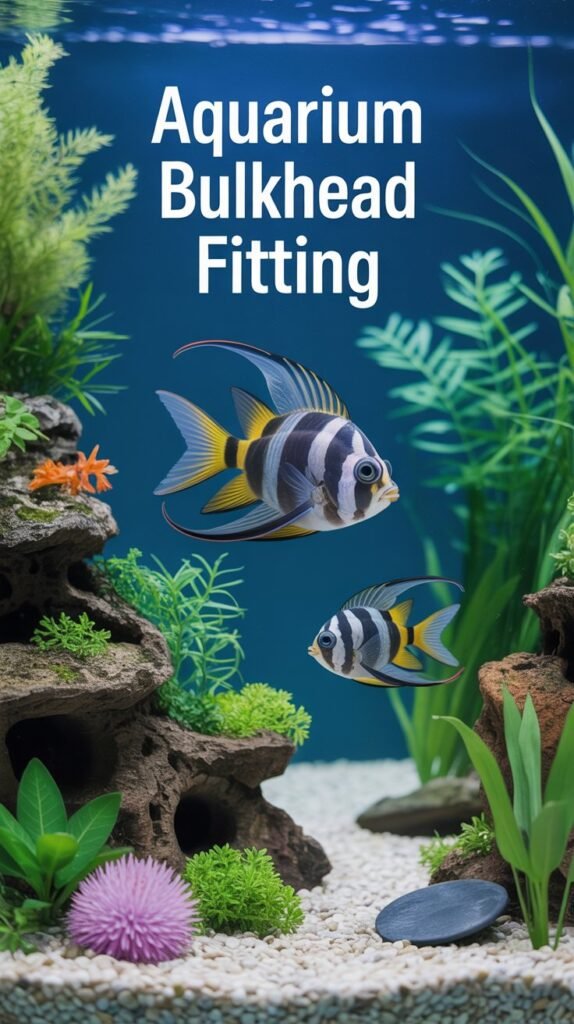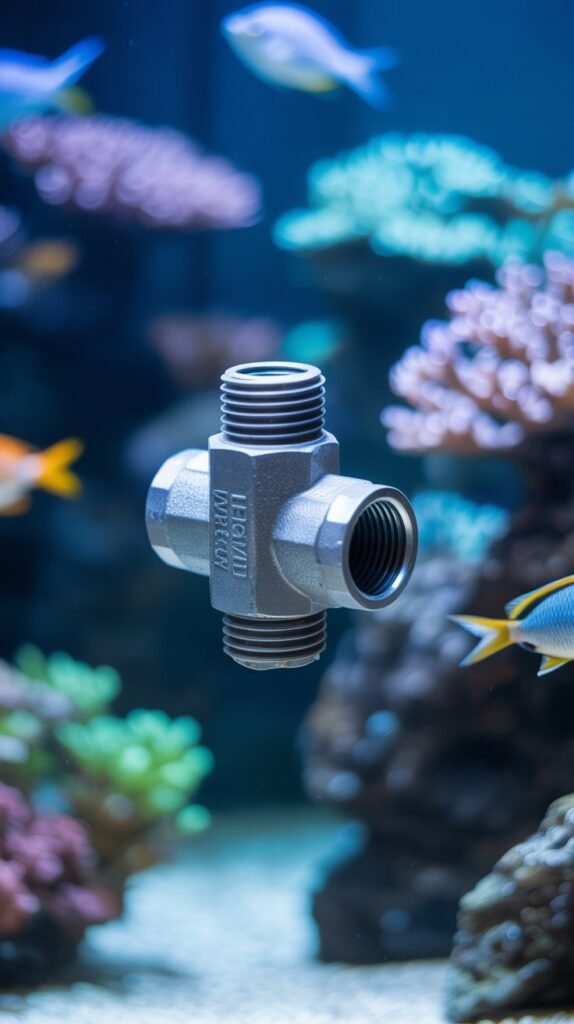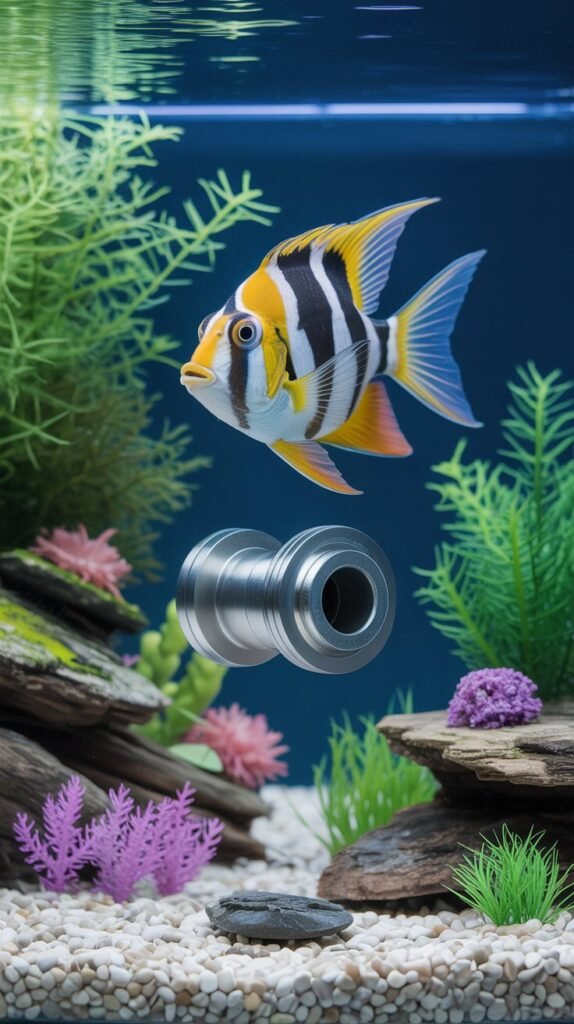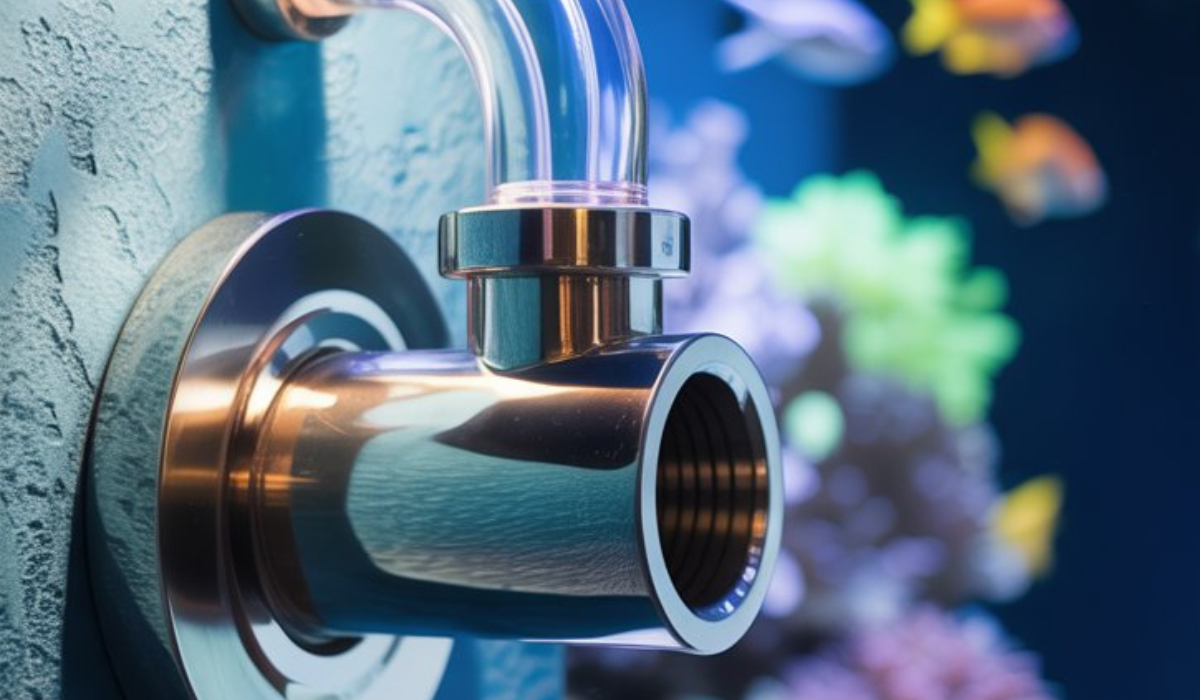When setting up or upgrading an aquarium, one essential yet often overlooked component is the aquarium bulkhead fitting. Whether you’re planning a sump system, creating a custom overflow, or improving water circulation, bulkhead fittings ensure safe, leak-free water flow through your tank walls. These fittings are indispensable in both freshwater and saltwater aquariums, especially for aquarists aiming for advanced filtration or plumbing setups.
In this comprehensive guide, we will explore what aquarium bulkhead fittings are, how they work, the different types available, installation tips, troubleshooting leaks, and how to choose the best one for your setup.
What is an Aquarium Bulkhead Fitting?
An aquarium bulkhead fitting is a plumbing connector that allows water to pass safely through the wall of a tank, sump, or reservoir. It provides a watertight seal while connecting pipes, hoses, or other plumbing parts. Bulkheads are essential in setups where water needs to travel between the display tank and filtration systems, such as sumps, refugiums, or external filters.
Without a bulkhead fitting, water passing through drilled holes could leak and compromise the aquarium’s stability. Bulkheads prevent this by using gaskets and threaded nuts to secure the connection tightly.
Why Use Bulkhead Fittings in an Aquarium?

Bulkhead fittings are vital for aquariums for several reasons:
- Leak-Proof Seal – Prevents water from leaking around drilled holes.
- Durability – Made of sturdy materials like PVC, ABS plastic, or glass-reinforced composites.
- Customization – Allows for advanced plumbing designs like overflows and closed-loop systems.
- Easy Maintenance – Enables disconnection and reconnection of plumbing without dismantling the aquarium.
- Professional Finish – Provides a neat and organized look compared to makeshift fittings.
Common Uses of Aquarium Bulkhead Fittings
Bulkhead fittings are used in various aquarium setups. Some common applications include:
- Sump Systems – Connects the display tank to a sump for mechanical, chemical, and biological filtration.
- Refugiums – Transfers water between refugiums and display tanks.
- Overflow Boxes – Helps drain excess water safely.
- Closed-Loop Circulation – Improves water flow without powerheads inside the tank.
- External Filtration – Connects to canister filters, UV sterilizers, or reactors.
Types of Aquarium Bulkhead Fittings
There are different bulkhead fitting designs available for aquariums. Understanding them helps you choose the right one for your setup.
1. Standard Bulkhead Fittings
- Straight-through fitting with a gasket and lock nut.
- Works with standard PVC pipes or barbed hose fittings.
- Most commonly used in sumps and drilled aquariums.
2. Slip vs. Threaded Bulkheads
- Slip Bulkhead: Requires PVC cement for permanent connections.
- Threaded Bulkhead: Uses screw threads for easy assembly and disassembly.
3. Double Threaded Bulkheads
- Threads on both inside and outside.
- Flexible for plumbing multiple connections.
4. Reducing Bulkheads
- Allows connection of different pipe sizes.
- Useful when plumbing requires size adaptation.
5. Uniseals (Alternative to Bulkheads)
- Rubber grommet-style fittings.
- Cheaper but less reliable than bulkheads.
Choosing the Right Bulkhead Size

The size of a bulkhead fitting depends on the diameter of the plumbing pipe you plan to use. Common aquarium bulkhead sizes include:
- 1/2 inch (12 mm) – Suitable for small tanks, low flow rates.
- 3/4 inch (19 mm) – Common size for medium tanks.
- 1 inch (25 mm) – Standard for most sump plumbing.
- 1.5 inch (38 mm) or larger – Used in large aquariums or high-flow systems.
Tip:
Always oversize your bulkhead slightly to handle higher flow rates. A 1-inch bulkhead is more reliable than a 3/4-inch for most aquariums.
Materials Used in Bulkhead Fittings
Aquarium bulkhead fittings are manufactured using various materials, each with unique benefits:
- PVC (Polyvinyl Chloride)
- Durable and corrosion-resistant.
- Ideal for freshwater and saltwater aquariums.
- ABS Plastic
- Lightweight and strong.
- Often used in reef aquariums.
- Polypropylene
- Resistant to chemicals.
- Useful in tanks with high chemical exposure.
- Metal (Brass/Stainless Steel)
- Rarely used in aquariums.
- Risk of leaching harmful metals.
👉 For safety, plastic bulkheads (PVC or ABS) are the best choice for aquariums.
How to Install an Aquarium Bulkhead Fitting
Proper installation is crucial to prevent leaks. Follow these steps:
Step 1: Drill the Tank (if not pre-drilled)
- Use a diamond-coated hole saw for glass tanks.
- Ensure hole size matches the bulkhead fitting.
Step 2: Clean the Hole
- Remove sharp edges and debris.
- Smooth the surface to improve gasket sealing.
Step 3: Position the Bulkhead
- Place the gasket inside the tank (water side).
- Insert the bulkhead through the hole.
Step 4: Tighten the Lock Nut
- Screw the nut onto the outside of the tank.
- Hand-tighten only (over-tightening can crack glass or acrylic).
Step 5: Attach Plumbing
- Connect PVC pipes, hoses, or adapters.
- Test with water before finalizing setup.
Preventing and Fixing Leaks

Leaks are the most common issue with bulkhead fittings. Here’s how to prevent and fix them:
- Always place the gasket on the water side.
- Do not use Teflon tape on bulkhead threads; it can cause cracks.
- Hand-tighten only. Use wrenches sparingly.
- Use silicone lubricant on gaskets for a better seal.
- If leaks occur, drain water, reseat the bulkhead, and reinstall carefully.
Bulkhead Fittings vs. Other Aquarium Plumbing Options
| Feature | Bulkhead Fittings | Uniseals | Hose Clamps | Silicone Seals |
|---|---|---|---|---|
| Reliability | Very High | Moderate | Low | Low |
| Durability | Long-lasting | Shorter lifespan | Short-term fix | Not suitable for pressure |
| Ease of Use | Moderate | Easy | Easy | Easy |
| Best For | Permanent plumbing | Temporary setups | Quick fixes | Emergency leaks |
👉 Bulkhead fittings are the gold standard for professional aquarium plumbing.
Maintaining Aquarium Bulkhead Fittings
While bulkheads are low-maintenance, a little care extends their lifespan:
- Inspect gaskets every 6–12 months.
- Clean salt creep and algae buildup.
- Replace cracked or hardened gaskets.
- Re-seat fittings if flow performance decreases.
Cost of Aquarium Bulkhead Fittings
The cost depends on size, brand, and material:
- Small (1/2 inch): $5 – $10
- Medium (3/4 – 1 inch): $10 – $20
- Large (1.5 inch+): $20 – $50
Premium reef aquarium fittings may cost more due to specialized materials.
Where to Buy Aquarium Bulkhead Fittings
You can purchase bulkhead fittings from:
- Aquarium supply stores
- Online retailers (Amazon, eBay, aquarium shops)
- Plumbing suppliers (ensure aquarium-safe material)
Popular aquarium brands: Lifegard Aquatics, Schedule 40/80 PVC bulkheads, Spears Manufacturing.
Tips for Beginners Using Bulkheads
- Start with threaded bulkheads for easier adjustments.
- Always buy an extra bulkhead for emergencies.
- Practice on scrap acrylic before drilling your aquarium.
- Double-check measurements before drilling holes.
- Keep silicone grease handy for gasket maintenance.
Advanced Bulkhead Applications
Experienced aquarists use bulkheads for creative setups:
- Bean Animal Overflow Systems – Silent, fail-safe water drainage.
- Herbie Overflow – Simple and effective dual-drain system.
- External Closed Loop Systems – Keeps pumps outside the tank for cleaner display.
- Multi-Tank Systems – Connecting multiple aquariums with one sump.
Conclusion
An aquarium bulkhead fitting is an essential plumbing component for anyone setting up a sump, overflow, or advanced filtration system. It ensures leak-free connections, professional plumbing design, and long-term reliability. By choosing the right size, material, and installation method, you can avoid common problems and maintain a healthy, well-functioning aquarium.
Whether you’re a beginner aquarist or running a large reef system, investing in quality bulkhead fittings will save you headaches in the long run.
FAQs about Aquarium Bulkhead Fittings
1. What is the best bulkhead size for a sump?
A 1-inch bulkhead is standard for most sump systems, handling strong flow rates without clogging.
2. Should the bulkhead gasket go inside or outside the tank?
Always place the gasket inside the tank (wet side) for a proper seal.
3. Can I use Teflon tape on aquarium bulkheads?
No, Teflon tape can cause cracks. Use PVC thread sealant or silicone-safe grease instead.
4. How long do aquarium bulkhead fittings last?
With proper care, bulkheads last 5–10 years or more. Gaskets may need replacement sooner.
5. Do I need to glue bulkhead fittings?
The bulkhead itself is sealed by its gasket, but slip fittings may require PVC cement.
6. Can I reuse a bulkhead fitting after removal?
Yes, as long as the bulkhead and gasket are undamaged. Always inspect before reuse.
7. Are metal bulkhead fittings safe for aquariums?
No, metals can corrode and leach harmful toxins. Stick to PVC or ABS plastic.
8. What if my bulkhead is still leaking after installation?
Drain water, remove the fitting, clean the surfaces, reseat the gasket, and reinstall carefully.

